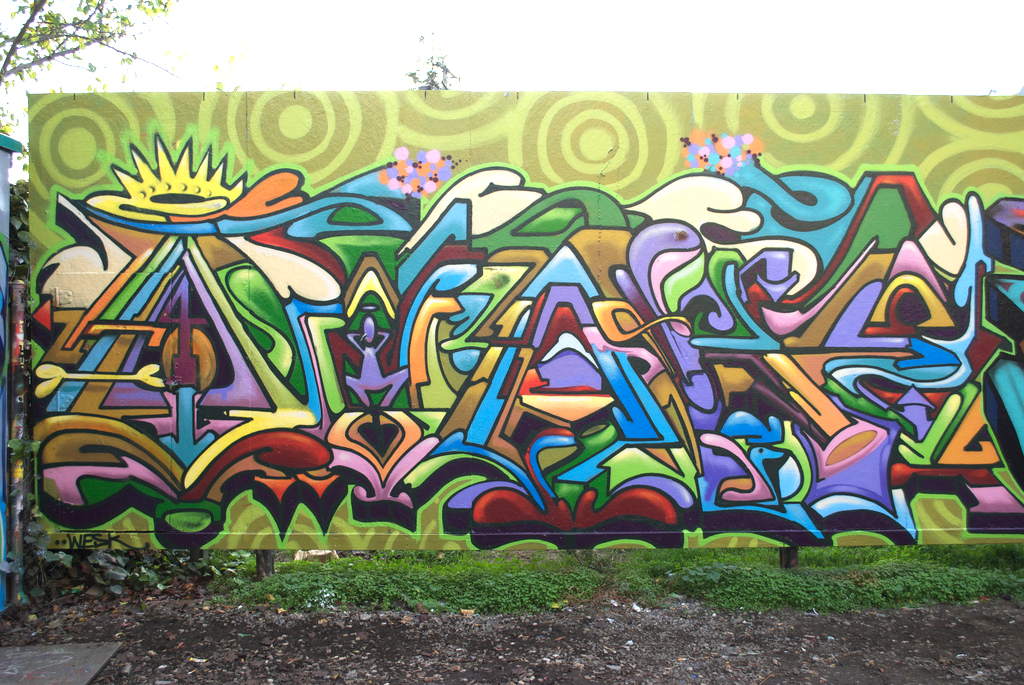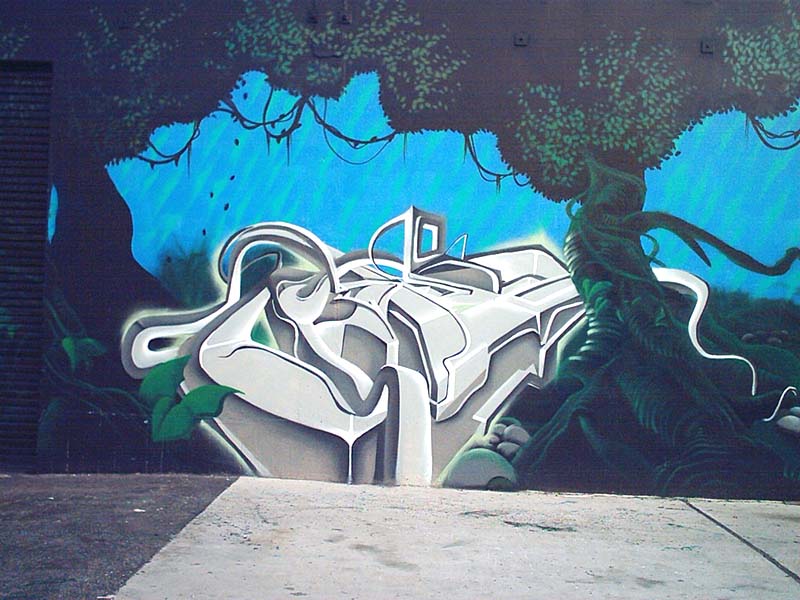
On April 3, 2010 I visited the Whitney Museum of American Art. The building itself was a work of modern art standing out among all of the buildings on Madison Avenue. It is a five story building which at each new level; the building protrudes out, similar to an upside down staircase. There were also very few windows to help showcase the art inside the museum. When I arrived, there was a line out the door, luckily it was a nice day outside. I observed the people on line while my mother and I waited about forty minutes to get in. Most of the people at the Whitney, which is what the museum is typically shortened to, look very sophisticated and keen on art. Their dress was very modern and untraditional and many had accents showing their different backgrounds. This museum attracted a variety of people, most who found art very interesting and fascinating. Although I enjoy art and have taken an introductory class in visual art, I felt out of place. I feel that many of the people at the museum knew a great deal about art and different artists, where my mother and I had a narrower background. However, I enjoyed the visit at the Whitney a great deal, seeing works of art by artists that we’ve talked about in class as well as art that I could compare with other art we’ve discussed.
From February twenty-fifth to May thirtieth, the seventy-fifth edition of the Whitney’s signature exhibition, the Whitney Biennial, took place. The exhibition this year was titled ‘2010’ and embodies a cross section of fifty-five artist’s contemporary art productions. The Biennials are always affected by the cultural, political and social instances of the time. Many more artists are operating and active, each of them part of a rich and lively system from which the Biennial as an exhibition draws its inspiration. Balancing different media ranging from painting and sculpture to video, photography, performance, and installation, ‘2010’ is a great example of Whitney’s past and future. Many of these artists have created spaces for performances and encounters between themselves and individuals from different communities. Several of the artists collectively try to develop a new historical movement, while others look back on abstraction and the history of modernism. Many of the images of the body are shaped by physical, spiritual, or social violence and have evidence of scars of war, discrimination, and hatred. However, these draw attention to larger social and political issues and are not hopeless, rather a form of regeneration, providing a chance for a new beginning. There were many artists whose work interested me and that I found very intriguing.

Born in Dickson Tennessee, Hannah Greely now resides in Los Angeles where she creates great sculptures. The sculpture in display at the Whitney, ‘Dual’ replicates everyday objects like many of her sculptures. In ‘Dual’ she replicates two booths in a bar, where the lighting is dark. It looks like Greely carefully designed this art because the rips in the cushions are nicely scattered. I feel that he is trying to display how the familiar can become strange and unknown. It questions what a real world object is and what a sculptural design is. Some in congruencies are the length of the seat cushion, the height of the table, and the handmade pay phone. This reminds me of the artist we learned about in class, Andrea Zittel whose relational art took regular objects to a new level. Although Andrea Zittel lived in her art, I feel that Hannah Greely’s sculpture delivers the message of taking art to the next level.

Josephine Meckseper creates a variety of art such as, installations, photographs, and films. He uses his art to expose the political ramifications of America’s culture of consuption. In ‘Mall of America’, Meckseper uses a video camera to explore the Mall of America in Minneoapolos, one of the top tourist spots in the United States. In this video he stops to obsevre all the different faucets of the mall such as the amusement park, the window displays, sale signs and shoppers. He then creates an abstraction of these images disorienting it. He does this by placing red and blue filters over the lens, turing some of the fottage on its side and creating a erry soundtrack. The mall turns into a dnagerous place of war where Meckseper uses the flight simulator attraction in the mall and added fighter pilot footage to create a hostile environment in the mall. It was interesting how he turned simple images and footage into an experience of war and violence. The normal wa turned into a cry for change in consumption and this art was a very creative may of displaying the messege.

Another piece of art that I found interesting was ‘Landscape with Houses #1’ because I find replication models very interesting. James Casebere, born in 1953 lives in Brooklyn and has since the 1980’s has used pictures and models to create surreal environments. He constructs tabletop models using materials such as Styrofoam, plaster and cardboard and then dramatically lights the model creating a mood for the art. His model, ‘Landscape with Houses #1’ was a very detailed model to date of an American subdivision based on one in Dutchess County, New York. The lighting created a depressing mood on the community, which was hit hard by the foreclosure epidemic of the past few years. Without reading about the art one could feel the message he was trying to portray based on the lighting and design which to me is what art is.

Kate Gilmore is another talented artist whose work is displayed at the Whitney. She was born in Washington DC in 1975 and now lives in New York. Her still from ‘Still Standing Here 2010’ is a mix-media sculpture with video, color, sound and dimensions variable. She is the sole protagonist in her video which explores themes of displacement, struggle and female identity. In the work displayed at the Whitney, she tries to escape from a tall column made of sheetrock by climbing, kicking and punching holes into its walls. Her attire displays her femininity wherein high-heels and a polka dot dress; however she works through these limitations determined to break free. The picture taken was before she escaped symbolizing women’s struggle and obstacles still faced in the social world today.

Lastly, Robert Grosvenor’s diverse and abstract sculpture intrigued me. He was born in 1937 in New York. His work seems to be fabricated; however, he created every contour by hand. He often forges relationships between two or more seemingly unrelated forms in his art and the art displayed at the Whitney did just that. Robert Grosvenor contrasts the surfaces of an aluminum screen along with a red bridge structure. Grosvenor describes the sculpture as “two lines of poetry meeting, one in the foreground and one in the background.” The aluminum element as well as the bridge both can be looked through to see the other piece of his art. This work creates unusual tension and curiosity; however, after looking at the art the two pieces fit well together and in a sense relate. The holes in the aluminum wall and the bridge both provide a way to the other side.



























